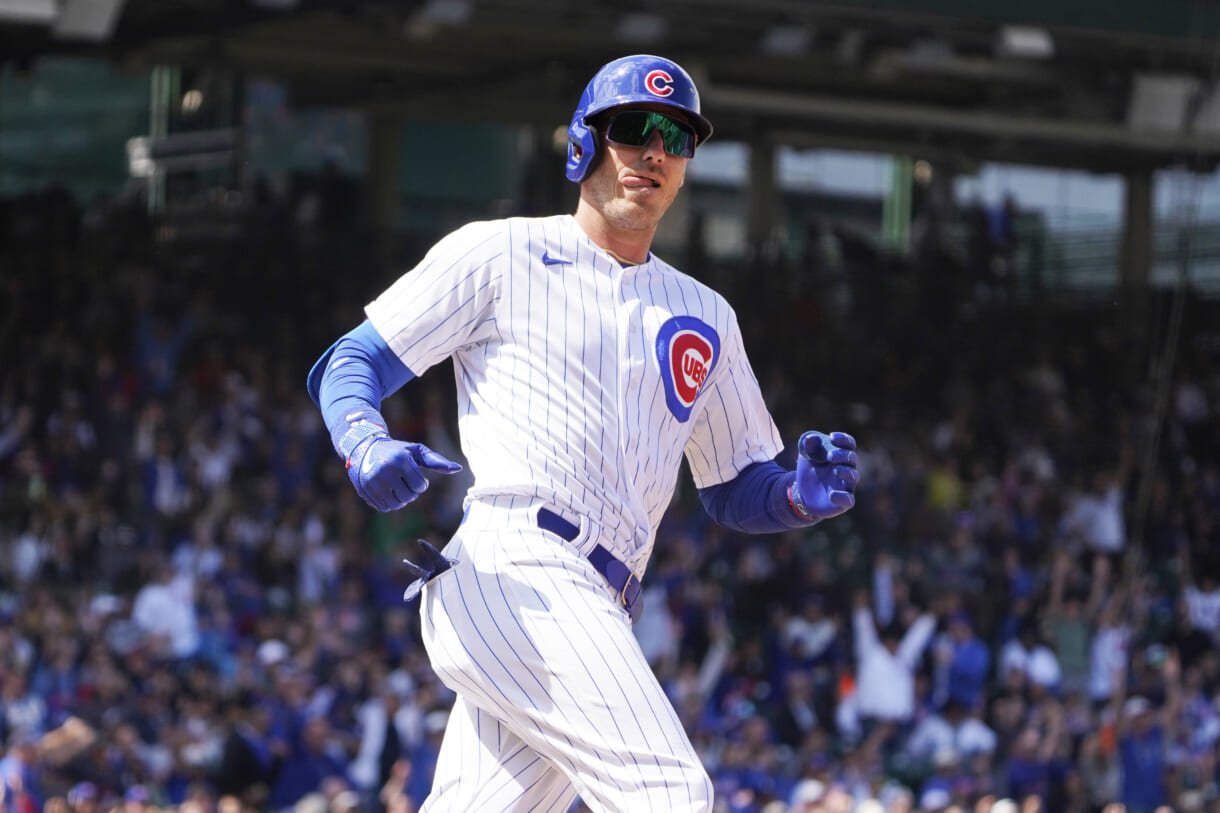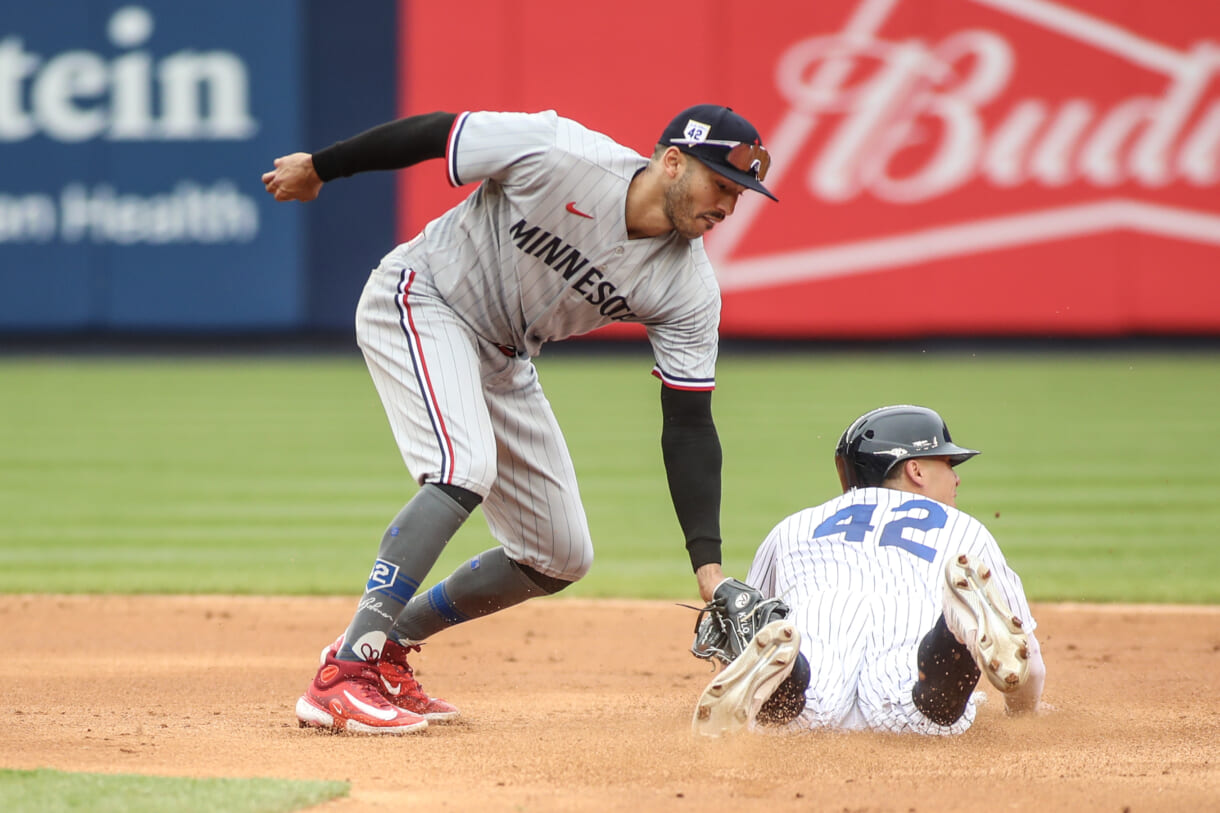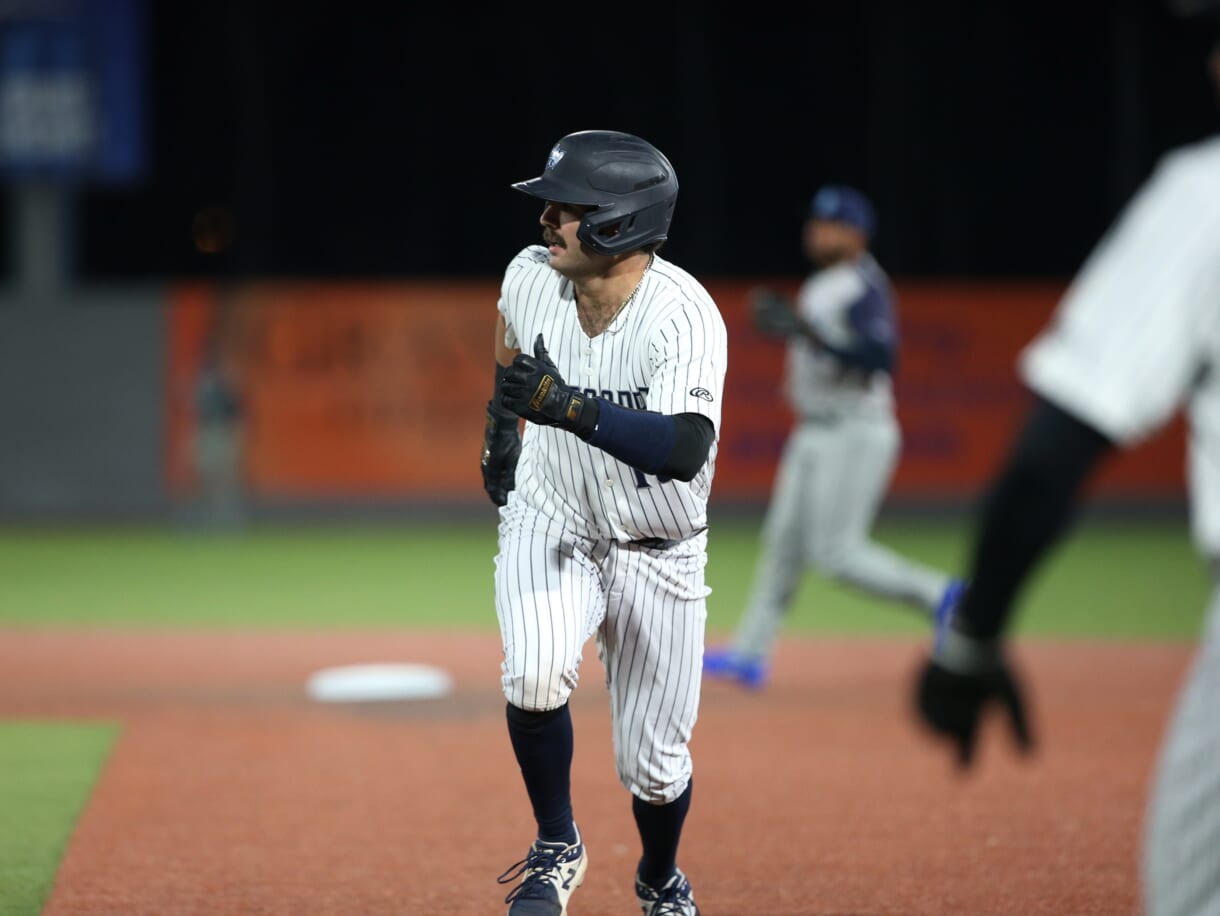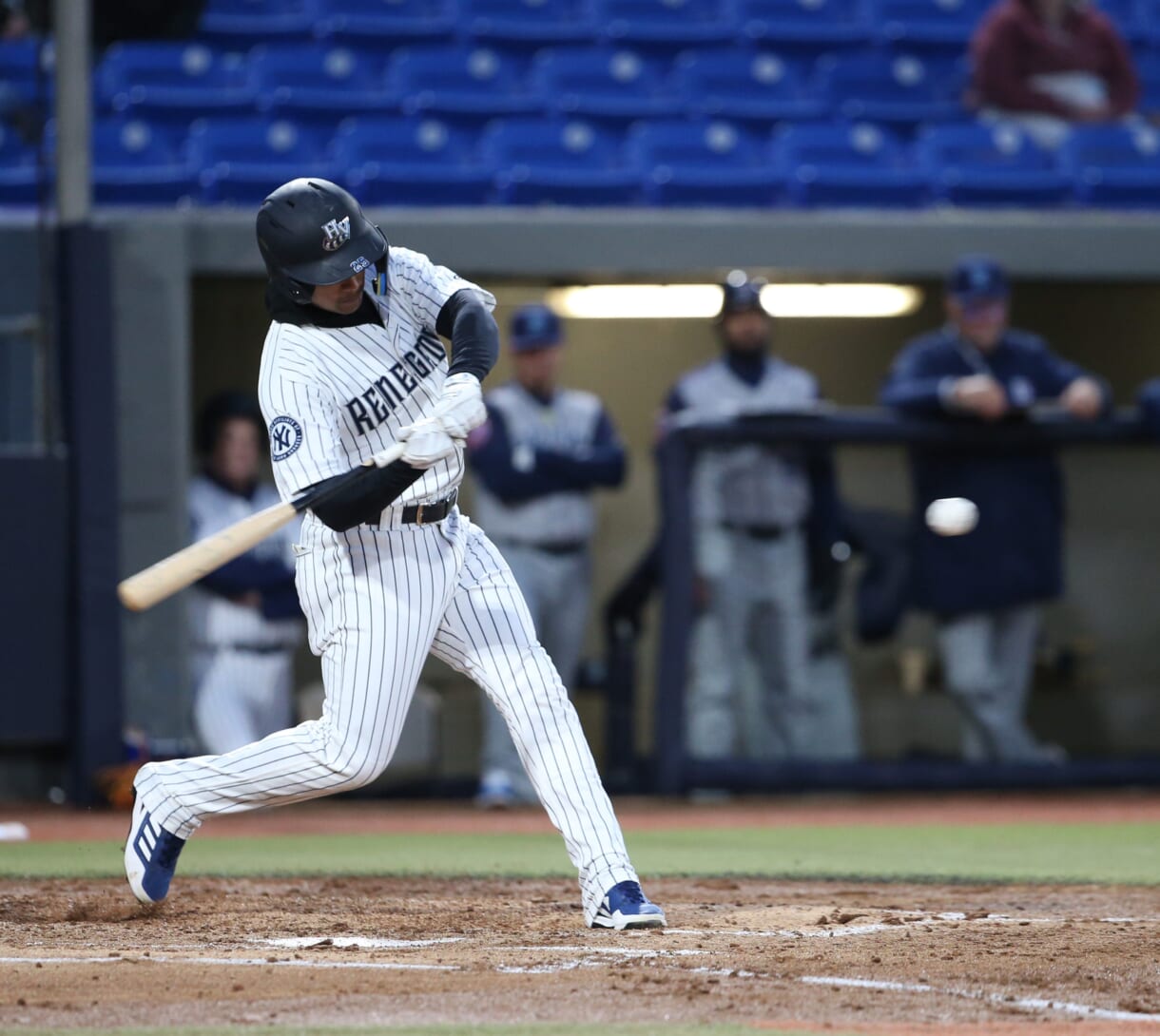
Right now, the New York Yankees face below 51.8% playoff odds, according to FanGraphs, while sitting at 50-44 and fourth place in the American League East. On the surface, this isn’t the end of the world; the Yankees are still only one game back from a playoff spot and will be getting Aaron Judge back at some point during the season. That being said, for a team expected to go out and win the division while competing for the title, this certainly isn’t good enough.
The Yankees are struggling to find consistency in their position player groups, not having “core pieces” and instead relying on a poor mix of underperforming position players. Things have to get better, and they have to establish some sort of consistency as a roster, and I believe that Cody Bellinger is part of that puzzle. A lot needs to change, but that has to start with the Yankees finding a form of consistency in who’s in their lineup on a year-to-year basis.
Is Cody Bellinger good enough? Are the expected numbers a strong enough deterrent for New York? All of that and more is what I hope to solve with this piece.
Should You Trust Cody Bellinger’s 2023 Results?
When it comes to expected results, Cody Bellinger is becoming the poster child for overperforming batted ball. With the fourth-largest margin of overperformance between their xwOBA and wOBA, Bellinger’s hard-hit data suggests he’s due for heavy regression. Bellinger has a lackluster 28.5% Hard Hit% (7th Percentile) and a feeble 86.9 MPH Average Exit Velocity, which shouldn’t yield a staggering 137 wRC+ and .893 OPS.
His xwOBA is the same as DJ LeMahieu, who has been disappointing for the Yankees at the plate, and his exit velocity and hard-hit numbers are worse than IKF, who doesn’t have much power at all. Is it fair to assume with this knowledge that Bellinger is most likely going to regress heavily? Well, yes, and I’d say that he won’t hold an OPS above .870 for the rest of the season, but does that make him a bad hitter? Not at all.
What Bellinger excels in is related to batted ball sprays, pulling over 30% of his flyballs and hitting flyballs at a staggering 47% clip. Now Bellinger has always hit a lot of flyballs, and he’s pulled them at a high clip too, but he’s generating more distance on these pulled flyballs than in years past, leading to an increase in wOBA and SLG%. When we look at how it compares to other deadball seasons where Bellinger has struggled mightily, we see how staggering the difference is:
| Year | wOBA | Launch Angle | Distance |
| 2021 | .642 | 40.3 | 324 |
| 2022 | .782 | 37.4 | 328 |
| 2023 | 1.023 | 34.9 | 342 |
Generating damage on pulled flyballs is how you’ll typically get home runs and extra-base hits, and Bellinger has excelled at generating damage through his reworked swing. His 12 HRs in 254 PAs would put him at a 28 HR pace over 600 PAs, which would be the most HRs he’s hit in a season since he hit 47 in his 2019 MVP campaign. Considering the short porch in RF, the ability to drive the ball into RF is extremely beneficial for his style of offense, and that’s why the expected results aren’t as concerning.
If Bellinger was relying on just a high batting average, the poor expected results and hard-hit data would certainly concern me. The Yankees wouldn’t benefit from someone who relies on luck to get singles, instead needing someone who can give them a jolt in their lineup and drive runners in, something they’ve struggled with in the absence of Aaron Judge.
Cody Bellinger brought his game power back without having the raw power he once did, and his new swing produces an extremely optimized style of play that should sustain itself. He excels at generating sweet spots, which are defined as batted balls between 8 and 32 degrees in Launch Angle, as his 38.2% Sweet Spot Rate ranks as one of the better marks in the sport. Add onto that a strikeout rate of 17.7%, and you have a hitter that puts the ball in play frequently, pulls flyballs with loft, and generate gets ideal launch angles.

If we look at his sweet spot rate on flyballs, it’s climbed from 7.9% in 2021 and 11.0% in 2022 to 17.0% in 2023, indicating fewer popped-up baseballs and more batted balls struck at a high enough angle to be a flyball, but low enough to be considered a sweet spot and generate tons of loft. It’s why he’s hitting HRs at a better clip than he has in years past, and it’s why he’s capable of doing so with a solid BABIP and average to boot.
So yes, while Cody Bellinger doesn’t generate damage contact often, nor does he have great Savant Page numbers, he does have incredible optimization of his batted balls. All of the underlying metrics may not like him, but the things they miss, such as batted ball direction, are things Bellinger excels at, which leads us to believe that he could overperform those metrics sustainably. Will he have a wRC+ nearing 140 with the Yankees?
I’d say no, but I think he can be a 115-120 wRC+ bat for a team that doesn’t just need offense but someone who can handle LF and make them a more dynamic and athletic team as well.
Helping the Yankees Outside of the Batter’s Box
The Yankees are one of baseball’s slowest teams, grading out poorly in terms of base-running runs. Tied with their crosstown counterparts in Queens, the Yankees’ -6 Runner Runs ranks last in the sport, and according to BsR (Base Running Runs), they’re the 26th worst with a -5.0. No matter if you’re looking at Baseball Savant or FanGraphs, the Yankees are a bad base running team, and they’ve got to improve in that regard in order to help a stagnant offense.
Cody Bellinger has 11 steals with a 79% Success Rate, and with +1 Runner Runs and +2.3 BsR, he’s one of the better base runners in the sport. He ranks in the 75th Percentile in Sprint Speed and would immediately have an impact on the Yankees’ running game. While base running is arguably the least important of the three main position player categories (offense, defense, base running), that doesn’t make it completely irrelevant.
Teams with strong value on the basepaths can get creative with their run-scoring, and while a home run-centric offense is just where the league has gone in light of better pitching and improved strategy, the new rules benefit base-running teams heavily. Young dynamic players are having an increased impact on the game, and we’re seeing teams discover a new identity in their ability to terrorize opposing defenses and keep them guessing.

Cody Bellinger adds to a lacking aspect of the Yankees that is shown in their aging group, but what about an issue that’s costing them clean innings? Left Field has become a massive issue for the Yankees, as not only do they lack offense at the position (82 wRC+) but they’re also struggling to make plays out there, with -11 DRS and -5 OAA. As a whole, they’ve produced a -0.1 fWAR (26th) and are responsible for a lot of the Yankees’ first-half struggles.
Bellinger has become an excellent defender at a myriad of positions, providing positive defensive value in his career at all three outfield spots and holding his own at 1B. He has just 315.2 innings in LF with +1 DRS and +3 OAA, and most of his outfield time has been spent in CF with +13 DRS and +21 OAA, but you imagine that his 87th Percentile Arm Strength and strong mobility will translate well into a corner outfield role.
It’s proven to be a difficult assignment to handle LF, but if Bellinger can just provide solid defense out there, the Yankees will be more than happy with the defensive upgrade they get. His track record as a dynamic athlete and great field speak for themselves, and he profiles like an outfielder who can do a great job out there given his diverse fielding skillset.
Bellinger’s well-rounded game makes him an extremely valuable player to have on any roster, as he sports the seventh-best fWAR among centerfielders (2.4). This is despite spending some time on the IL due to the catch I just highlighted, limiting Bellinger to just 60 games out there. He’s playing a 5.7 fWAR pace, which would be his best 600 PA pace out of any season in his career outside of the aforementioned MVP campaign.
For an extremely well-rounded player, the Yankees are going to have to pay a pretty penny in the trade market, but does it make sense for a rental whose contract expires at the end of the season? How does this address one of the initial concerns with the team, which are their roster turnover rates at a myriad of positions and lacking a foundation?
Adding Cody Bellinger to the Yankees’ Core
When you try to find a “core” in that Yankees’ lineup, you quickly fall short of options. Anthony Volpe seems to be on his way to joining that core, and Giancarlo Stanton’s big contract and power will always make him a force to be reckoned with. Gleyber Torres doesn’t seem like a name that’ll get handed an extension either, so it’s likely that from their 2021 team, these positions will be different heading into 2024:
- Catcher
- First Base
- Second Base
- Third Base
- Shortstop
- Left Field
- Center Field
The only players from the Opening Day lineup that season who are still on the team are Gleyber Torres, Giancarlo Stanton, and Aaron Judge, with Torres not playing the same position he did back then and Aaron Judge qualifying as a center fielder in 2022. There needs to be a certain level of consistency in the lineup, pieces the Yankees can pencil in for multiple years to cover spots on the roster.
This stems from acquiring cost-controlled talent, but that seems to also be influenced by age. Cody Bellinger turned 28 this past July, and giving him a four-year extension in the offseason would only carry his contract out to his age-32 season. Giving him a deal similar to Andrew Benintendi’s five-year $75 million deal, the Yankees could net a strong defensive CF with a left-handed swing, solid bill of health, and good power-contact tools for the next half-decade.
If the Yankees are able to keep Everson Pereira, they’d be able to trot out this lineup on Opening Day next season:
- Anthony Volpe SS
- Aaron Judge RF
- Cody Bellinger CF
- Giancarlo Stanton DH
- Anthony Rizzo 1B
- Gleyber Torres 2B
- Everson Pereira LF
- Oswald Peraza 3B
- Ben Rortvedt C
The Yankees would likely want to add another veteran bat to that lineup somewhere at either 2B, as you could either move Torres and have Peraza take over at 2B to give the Yankees room to add a 3B. As for who that third baseman could be, we don’t really know the answer to that. Peraza and Volpe would be a dominant defensive duo up the middle, with Volpe having the third-best DRS (8) among shortstops in baseball.
If Peraza can develop into a consistent 105 wRC+ bat with a strong glove and baserunning, he could mirror a Kolten Wong type, who had a 102 wRC+ and 19.6 fWAR in 1070 games between 2014-2022. Defense and base running are still valuable, and with a competent bat, Peraza would make for an excellent defensive specialist who can create runs with strong contact and speed tools and a good feel for the strike zone.
If Volpe continues to develop, 2024 could be the year he finally becomes the Yankees’ leadoff hitter. Sporting a walk rate of 13.2% and .376 OBP across his 276 MiLB games, Anthony Volpe has always had a great command of the zone. He’s chasing more than ever this season, but he’s lowering the strike rate and making better swing decisions as of late. Perhaps chicken parm is all it takes to lead off for the New York Yankees.

Giancarlo Stanton has looked a lot better lately, with a 187 wRC+ in his last 11 games and projections liking him for the rest of the season. He’s playing a lot of RF as well, where he feels most comfortable. He has a 166 wRC+ and five HRs in the 13 total games he’s played there this year, and his own comments about being more “locked in” at the plate when he’s playing the field suggest it’s an experiment that needs more run.
Having Bellinger-Judge-Pereira allows the Yankees to have three outfielders who can play all three outfield spots, so it gives them flexibility with alignments to allow and accommodate for Stanton’s defensive limitations that prevent him from playing LF at Yankee Stadium. There’s still one accommodation that sticks out, and that’s the injection of Ben Rortvedt into the lineup.
Ben Rortvedt has put up a 131 wRC+ in Triple-A with a 13.7% BB% and great defense as well. According to BaGS+, Rortvedt’s offensive profile at Triple-A would translate to the MLB level well. Hitting him against RHP would make him the strong-side platoon, where you could have Jose Trevino back him up. Jose Trevino has a career 96 wRC+ vs LHP, which is far more respectable than the 57 we’ve gotten this season.
Kyle Higashioka could net you a lottery ticket elsewhere, and the Yankees would have the opportunity to get a 90-95 wRC+ combination in their catching room. Getting league-average production from your catchers, but how about inserting Everson Pereira? We’ve discussed Bellinger, everyone knows Judge is great, and you expect Rizzo finds it eventually but is trusting a rookie the right call?

Full disclaimer; the Yankees shouldn’t have Everson Pereira prevent them from making a deal for a star player. That being said, in the likely scenario where the Yankees aren’t acquiring Juan Soto or Shohei Ohtani, they’ll likely remain with their #4 ranked prospect. Pereira has displayed incredible power skills, and while his strikeout and walk numbers suggest he’ll have poor plate discipline numbers, his ability to generate high BA and SLG% numbers should give him a strong OPS.
His great speed and outfield versatility make him a high-upside outfielder who can really hit. In 51 games between Double-A and Triple-A, Pereira’s hitting .312 with a 150 wRC+ and is starting to find a better feel for the strike zone. He still boasts a strikeout rate above 28%, but in his last 27 games, he’s kept his K% to just 24.3%, and his strikeout rate this year is already 2% better than where it was last season in Double-A.
Suddenly, the Yankees are a fun, young, exciting team with plenty of strong hit tools, plenty of HR power, defensive competence, and versatility. The Yankees can start to make a youth movement in the coming year or so, and adding a strong left-handed outfield bat to stabilize the middle of the lineup would only make that team better. It’s a team with long-term and short-term viability and gives the Yankees another core piece to build around.